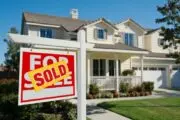
Skidmore, Owings & Merrill (SOM) have created a building design that does exactly that.
At last year’s United Nations Climate Change Conference in Glasgow, SOM debuted Urban Sequoia – a prototypical urban high-rise that’s capable of purifying surrounding air and sequestering thousands of tons of carbon over a 100-year lifespan through its innovative underfloor ventilation system that puts each square foot of material to use capturing, storing and reusing carbon.
At the time, the prototype was visionary, but still a few steps shy from the realm of possible.
This week, the firm returned to the 2022 United Nations Climate Change Conference (COP27) in Sharm El Sheikh, Egypt to reveal a more refined design that was developed after months of additional research. But this time it’s not just an idea for the future – it’s a buildable reality for today.
Dubbed Urban Sequoia NOW, SOM’s latest design promises to reduce upfront embodied carbon by 70 percent during its construction thanks to a ‘reductive’ approach to building that differs from the typical additive method in which carbon is added to the atmosphere through each step of the building process.
Over the first five years of the building’s life, it can achieve a net-zero carbon status. Over a 100-year lifespan, Urban Sequoia buildings could absorb more than 300 percent of the amount of carbon emitted in its construction and operations – pushing it beyond net-zero.
“We asked ourselves how low we can go in emitting carbon in construction, how high we can go in carbon sequestration, and how long we can go in extending the typical building’s lifespan,” SOM partner Kent Jackson said. “Our latest concept for Urban Sequoia answers these questions.”
SOM’S beyond-net-zero approach stems from the idea that buildings should be thought of as living organisms – self-sufficient entities that can significantly reduce carbon emissions, generate energy, absorb carbon from the atmosphere and survive far beyond the typical 60-year lifespan of the average building.
“Urban Sequoia is a systems approach, a philosophy,” SOM sustainability director Mina Hasman said. “It is a way of thinking about cities as ecologies, as living and breathing systems that can be reconfigured to achieve dramatic reductions in whole life carbon, reframing the built environment as a solution for the climate crisis.”
SOM’s design is a response to the urgent need to rethink what our built environment could look like. The question is not whether the world needs more buildings – rather, it’s a question of how builders can meet the needs of growing city-centres while ensuring environmental health and prosperity for generations to come.
According to the firm, roughly 2.5 billion square feet of new construction will need to be built in cities by 2060 to meet the needs of the growing global population. However, despite only taking up three percent of Earth’s surface area, cities are responsible for approximately 75 percent of global carbon emissions. Urban Sequoia promises to offer a holistic solution to these two competing forces that seem to constantly be at odds with each other.
Most notably, the design is applicable to any new building type in any location – meaning residential, business, institutional and industrial buildings could all become beyond-net-zero in the future. While densely populated urban areas are the ideal location for forests of Urban Sequoias, SOM says the options for implementing the idea are unlimited.
For more information, visit som.com.







